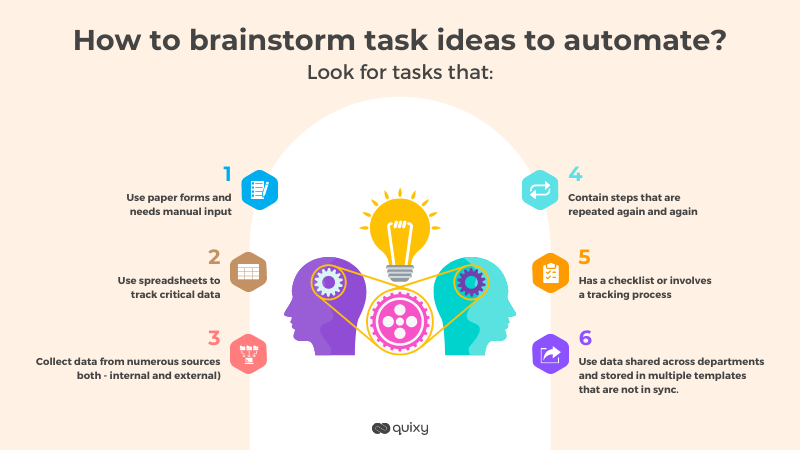
The great resignation started as a response to the American government refusing to provide employee benefits during the covid19 pandemic. It led to the United States facing 10.9 million open jobs at the end of July 2021. 2.9% of the American workforce, roughly 4.3 million people, left their jobs in August 2021.
This nightmare for employers is far from over. According to a recent report from Microsoft, 40% of the workforce is thinking of leaving their current jobs this year. So why is this happening? And why is it not stopping when the pandemic itself looks like it’s coming to an end?
According to research, the pandemic got 71% of employees to rethink their career choices.
The good news is that companies aren’t entirely helpless! This same research also suggests that if employers manage to provide the “right conditions” to their employees, 59% of them will prefer to stay, and 73% said they like their current roles.
So while we still can’t see the light at the end of the tunnel, we can still manage to retain our employees and, in the process, also improve our bottom line.
Why should you care about the great resignation?
For one, the company’s cost when an employee leaves is exceptionally high. Let’s say a new employee joins the organization today; it will take them 6 to 9 months to learn the trade tricks and become fully beneficial to the organization. And a company generally loses around 12 – 20% of its employees each year which will equal over One million dollars. Not to mention the cultural and reputational costs!
There you have it! You need to stop employee turnover, and we’ve got you covered.
How to retain employees from the great resignation?
The one thing experts agree on is making the employees happy, which will get them to want to stay with you. The one universal way to make employees happy is to give them meaning in their work. The current workforce wants to be involved in mission-critical work. No more dull hours in the office they are going over pointless tasks that do not justify the usage of your employees’ intelligence!
We have a workforce that has diverse skills with remarkable critical thinking abilities. They want their work to be engaging, and who can blame them?
This is where Automation comes in!
And no, we don’t mean robots to replace your employees. Instead, we need to use Automation to improve employees’ daily work lives.
Also read: The Great Resignation – What is it, and how do you put an end to it?
Automation to change the future of work
All the mundane tasks can be automated with business process automation, which will free up your employee’s time to focus more on core functions that add value to the organization. A simple task, say manual data entry, can be automated so that your employee has more time for customer interaction.
This is why many companies are adopting business process automation and digital transformation.
With many employees preferring to work from home to the office, it is essential to ensure proper optimization is done to keep the processes running smoothly. Automation will be of great use here!
What else can Automation do for you?
In case you are not convinced that this is the need of the hour that can save your company, here are a few more reasons:
Introducing BPA and making your processes less dependent on your employees will ensure that the work will go on uninterrupted even if a particular employee leaves the organization. It also reduces any manual errors and can be continually optimized.
Automation can also help prevent burnout among employees, one of the main drivers behind the great resignation. Repetitive tasks and high-volume processes can be easily automated, decreasing the burden on your employees and hence keeping them from having to overwork.
Automation makes life so much easier, but it also helps you get more done with fewer people by increasing efficiency.
According to Andy Binns, the co-founder of Change Logic, “Corporations should explore creating more autonomy for employees within the company. Give them a ‘license to explore’ that will allow them to realize more of their entrepreneurial ambitions from inside the company, without sacrificing the sense of purpose and community that define the best workplaces.”
How to use Business Process Automation to improve processes?
To improve any process, we need to begin by mapping the process.
The organization itself will have several workflows, and these need to be mapped with the help of all the stakeholders. Once it is over, you can begin to build workflows that ensure that information and tasks reach the right people.
Advanced analytics will also give you some critical information about the processes and the bottlenecks that can be fixed within the organization.
Once the process is laid out, it needs to be continuously optimized. This can be done by involving your employees directly. There is no expert like the people who work with the process every single day, and they are the ones who can optimize it. They can make it faster, more logical, smooth, and add value to your organization. This will empower them and keep them happy, which will inevitably improve the satisfaction of your employees.

Importance of citizen developers and no-code platforms
And no, automating a business process does not require as much effort as it seems; you can use tools like Quixy with absolutely no code that lets you build workflows, and more importantly, it will allow your employees to make them instead of your IT team.
According to Bain and Company and UiPath, 86% of employees want to use Automation, but 70% don’t get access to it. Imagine how better off you will be if your experts create apps for themselves!
No code platforms let you create apps with just the drag-and-drop method!
According to IDC’s research, 39% of 380 enterprise respondents plan to employ low-code and no-code development platforms in the next two years, with 9% already doing so.
How to get started?
Not sure where to start? here is a quick list of what kind of processes you should be automating:
- Repetitive tasks
- Tasks involving multiple people
- Reminders and alerts
- Time-consuming tasks
- Processes with high chances of human error
- Processes with high volume
Also Read: 10 Automation Mistakes That Must Be Avoided
This will improve the work-life of your employees and make them want to stay with your organization. You will not only save in terms of costs but also reap the intangible benefits that come with giving your experts more autonomy to exercise their ideas and skills.

Unleashing the Power Trio: Automation, No-Code, and the Great Resignation
In the era of the Great Resignation, where talent retention is a top concern for organizations worldwide, a powerful trio emerges to combat this challenge head-on. Automation and the game-changing capabilities of no-code platforms offer a compelling solution. By automating repetitive tasks and empowering employees with no-code tools, organizations create a dynamic environment where innovation flourishes, job satisfaction soars, and the desire to leave fades away. Picture a workplace where automation takes care of the mundane while individuals unleash their creativity and focus on meaningful work.
This winning combination addresses the Great Resignation and paves the way for a more engaged, productive, and resilient workforce. Embrace the power trio of automation, no-code, and the Great Resignation, and unlock a future where talent thrives and organizations thrive with them.
Frequently Asked Questions (FAQs)
Explore our curated list of frequently asked questions to find expert insights and practical advice on leveraging automation to address the challenges posed by the Great Resignation and drive talent retention.
Q. What is great resignation?
The Great Resignation refers to a significant surge in employees voluntarily leaving their jobs in various industries worldwide. This phenomenon, observed during the post-pandemic period, is driven by factors such as reassessing priorities, seeking better work-life balance, career advancement, or pursuing entrepreneurial endeavors. The Great Resignation has led to increased turnover rates and organizations facing challenges in retaining talent. It has prompted companies to reevaluate their employee engagement strategies, workplace policies, and overall employee experience to address this widespread trend.
Q. How does business process automation help reduce employee turnover and address the Great Resignation?
BPA plays a vital role in reducing employee turnover and addressing the Great Resignation by creating a more engaging and fulfilling work environment. By automating repetitive tasks, employees can focus on higher-value work, leading to increased job satisfaction and reduced burnout. Automation also enables better work-life balance and empowers employees with the tools to be more productive, resulting in a more positive employee experience and ultimately reducing the desire to resign.
Q. What is business process automation (BPA), and how does it benefit organizations?
BPA involves using technology to streamline and automate repetitive tasks, reducing manual effort, errors, and processing time. It benefits organizations by improving efficiency, productivity, and accuracy, freeing up resources for more strategic and value-added activities.
Q. What are organizations’ key challenges in implementing business process automation?
Key challenges in implementing business process automation include process analysis and design, integrating systems and technologies, change management, and employee adoption. Overcoming these challenges requires a comprehensive strategy, effective communication, training, and involving employees in the automation journey.
Q. How can business process automation improve operational efficiency and productivity?
Business process automation improves operational efficiency and productivity by eliminating manual errors, reducing processing time, enabling real-time data access, and automating workflows. It streamlines processes, enhances collaboration, and allows for scalability, leading to improved customer satisfaction and overall organizational performance.
Q. How can organizations measure the success and ROI of their business process automation initiatives?
Organizations can measure the success and ROI of their BPA initiatives by tracking key performance indicators (KPIs) such as process cycle time, cost savings, error reduction, customer satisfaction levels, and employee productivity. Conducting regular evaluations, collecting feedback, and comparing before-and-after metrics can provide insights into the impact and effectiveness of automation efforts.
Login
Please login to comment
0 Comments
Oldest
















